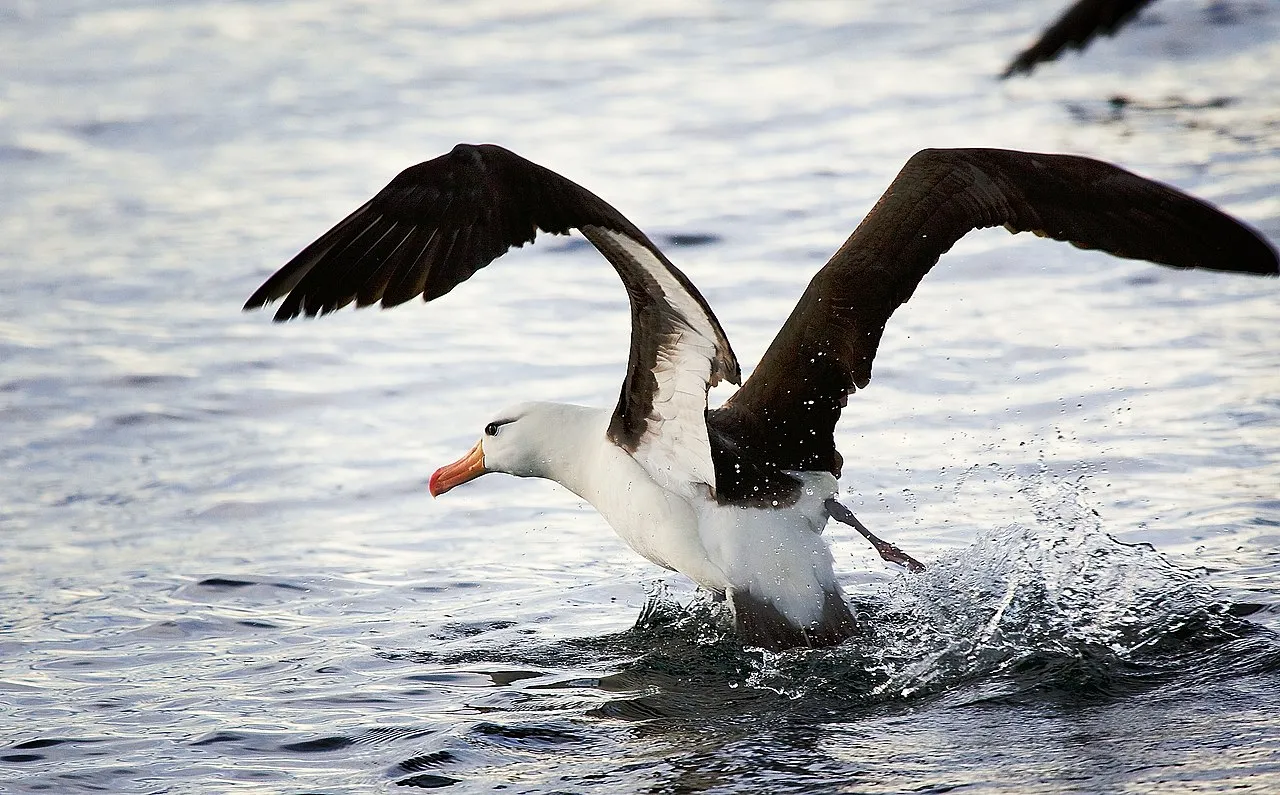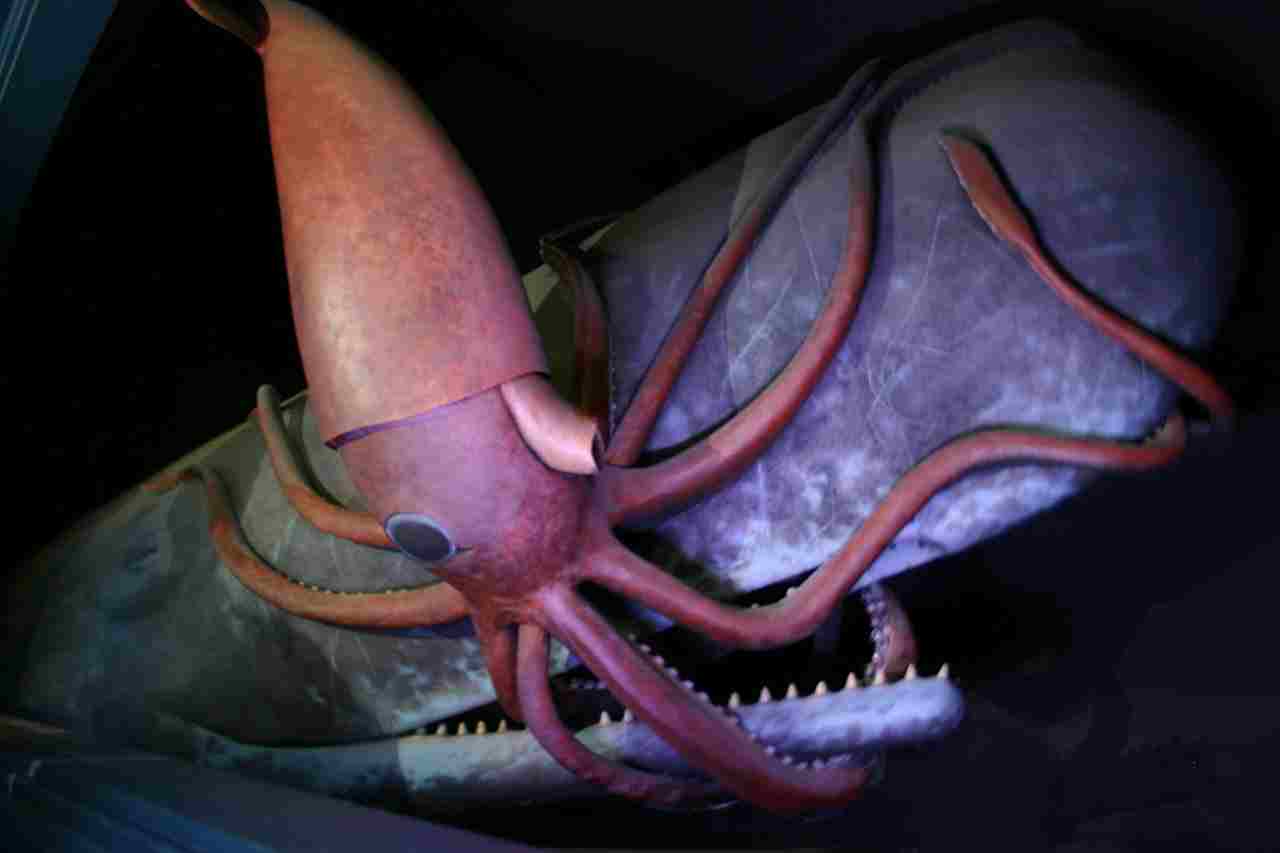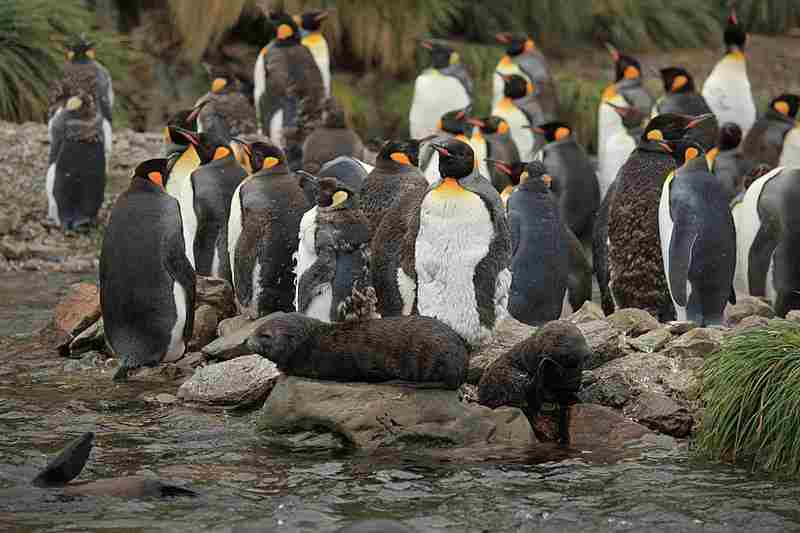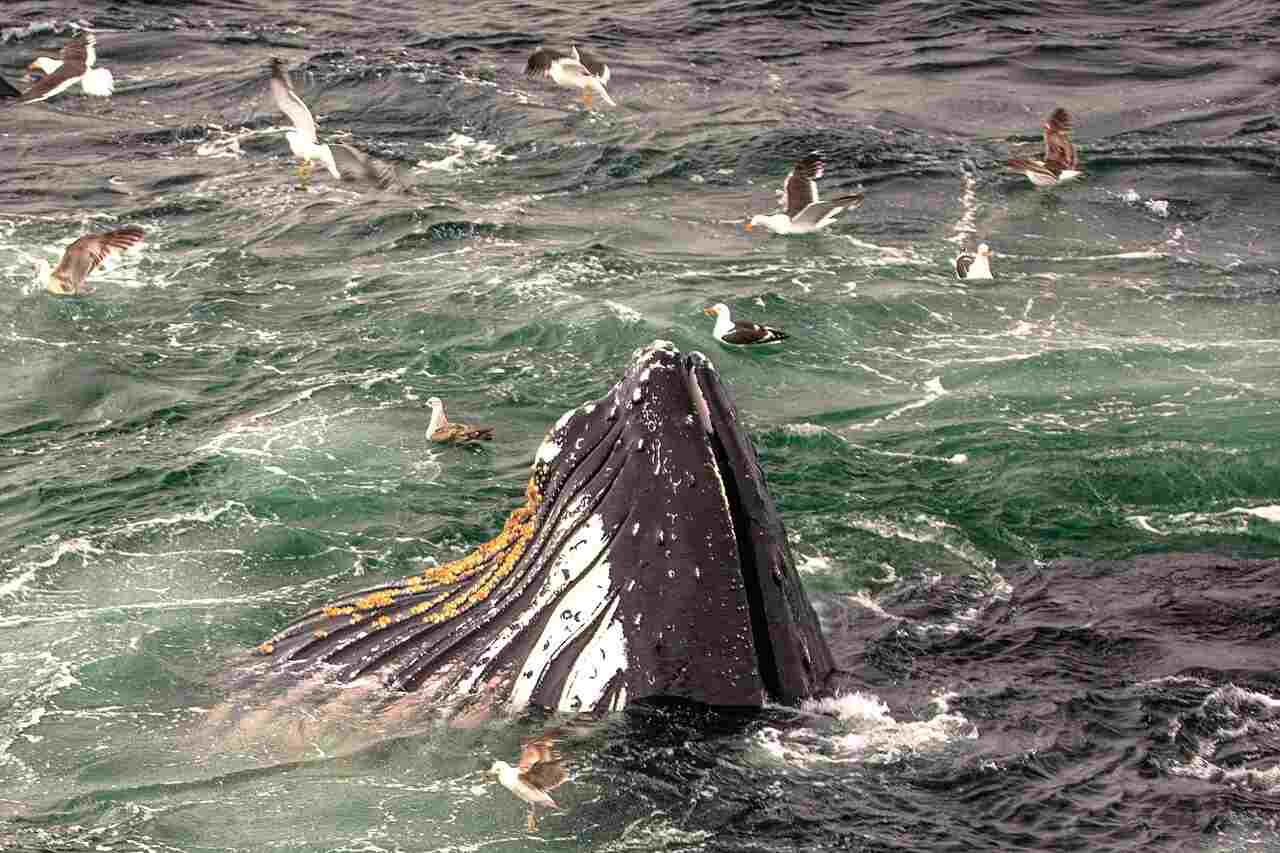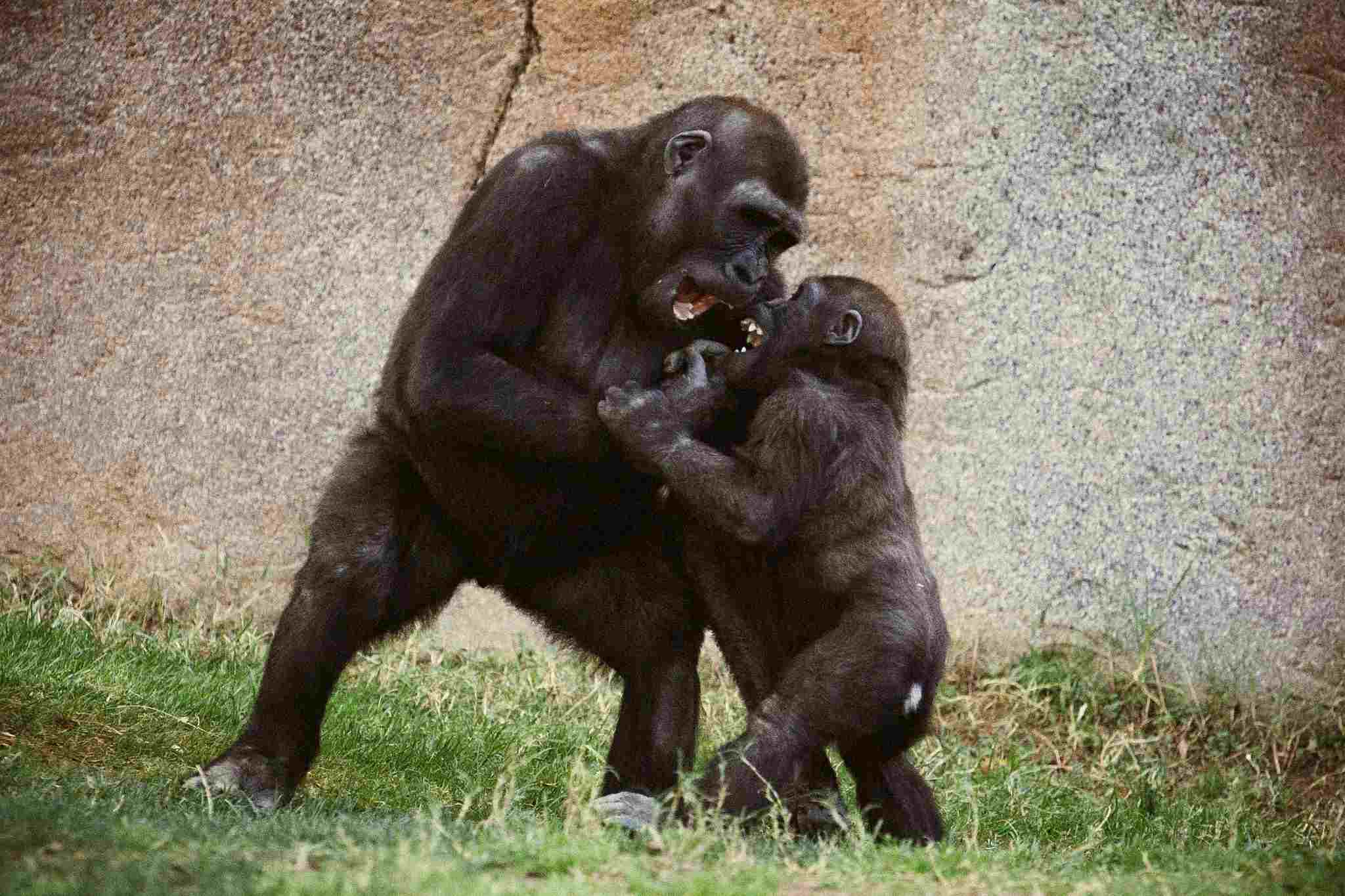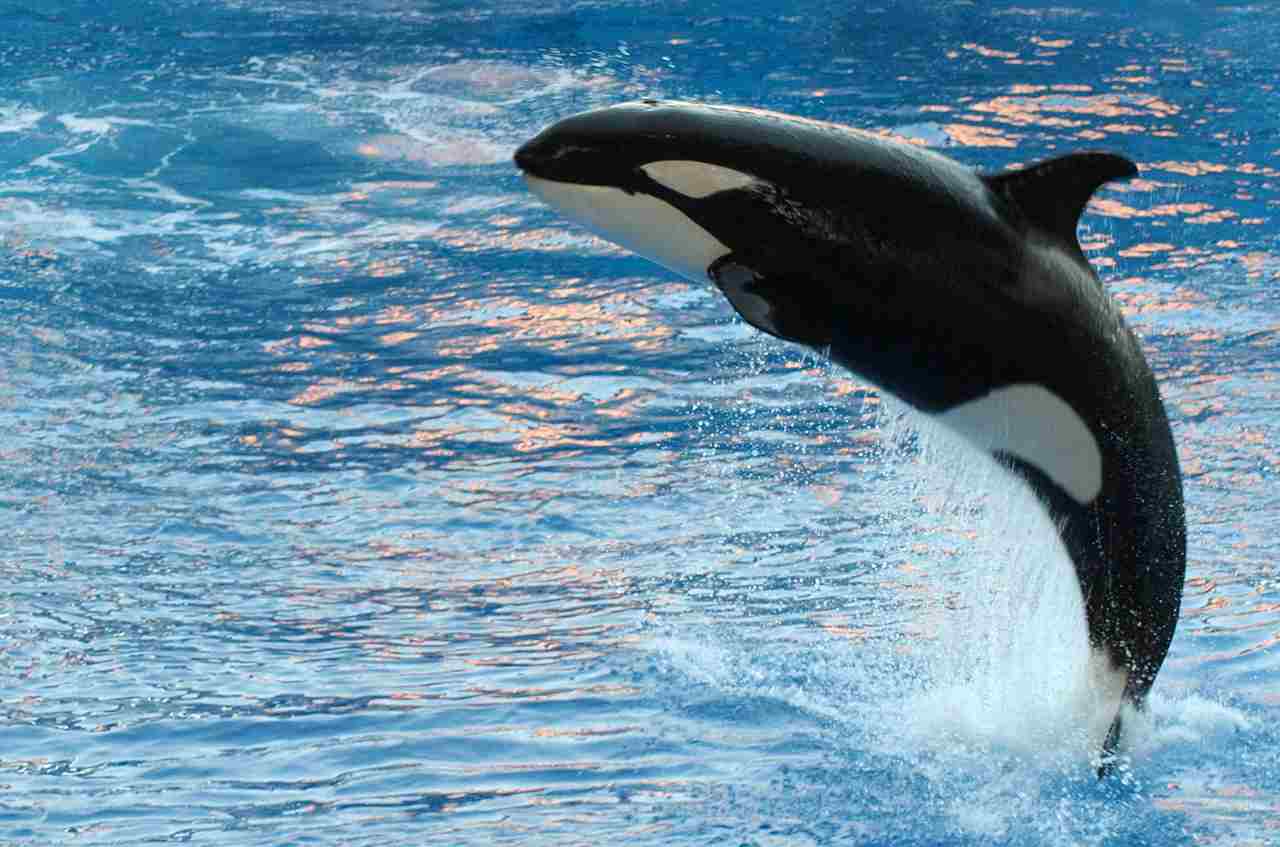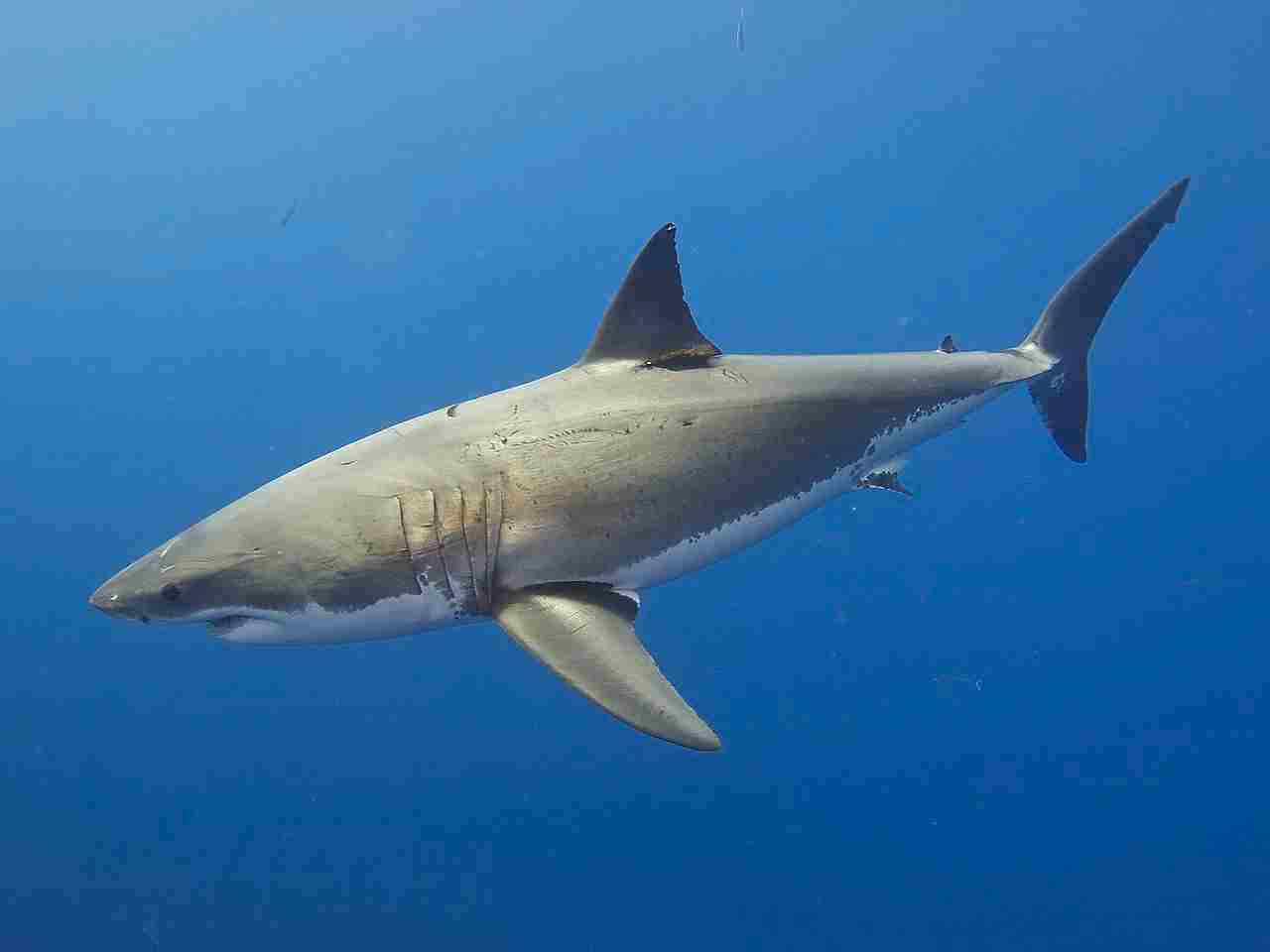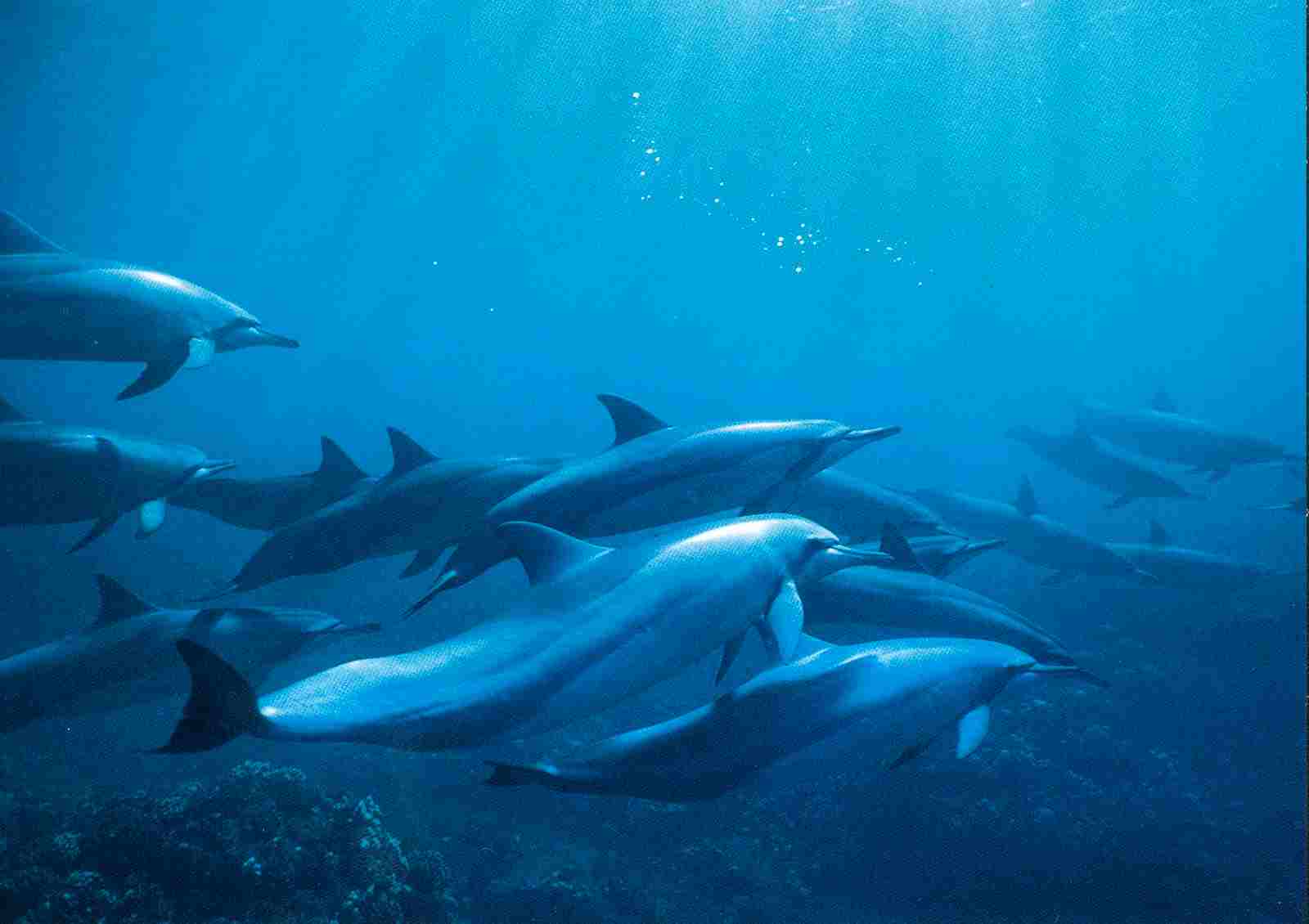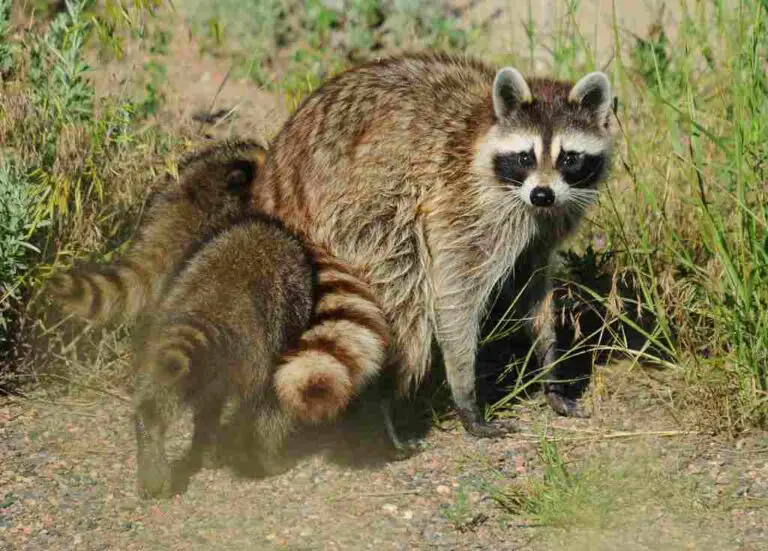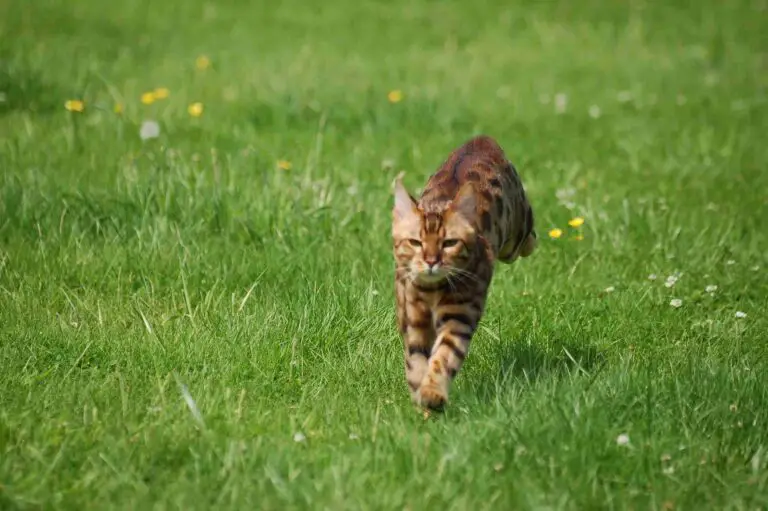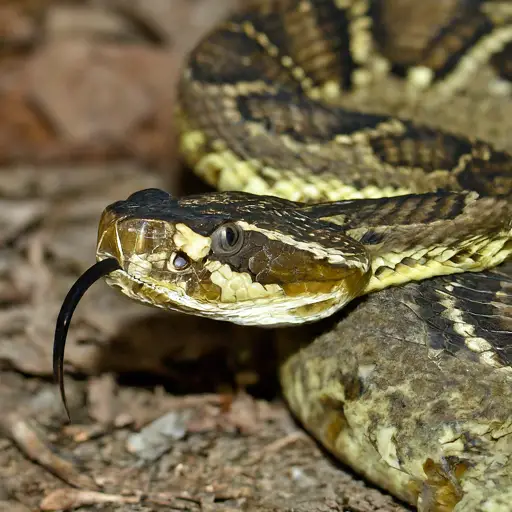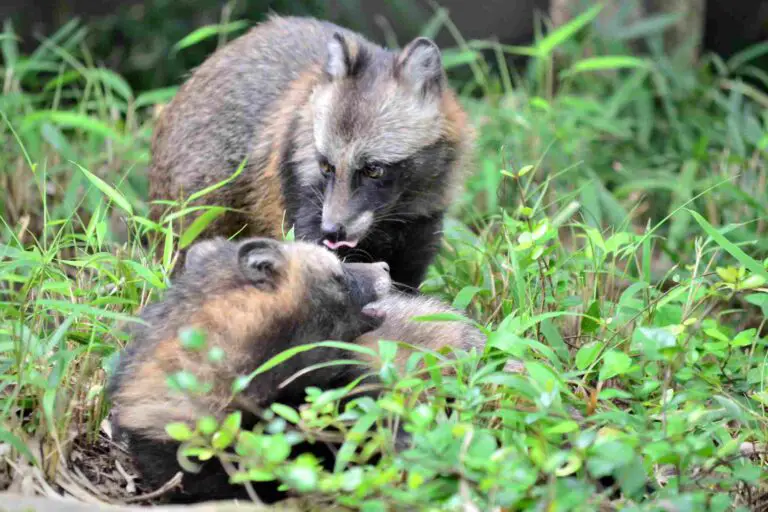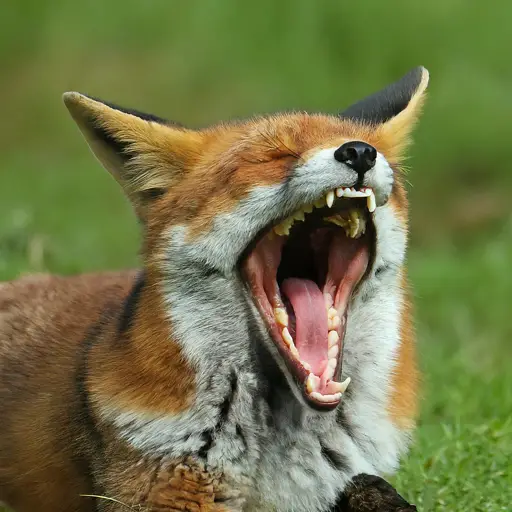11+ Carnivores in Antarctica and Their Characteristics
Carnivores in Antarctica are a diverse array of predators that have adapted to the extreme cold and harsh conditions of the continent. They play crucial roles in the Antarctic ecosystem as top predators, regulating populations of prey species and contributing to overall ecosystem balance. These carnivores include the Southern Elephant Seal, Leopard Seal, Weddell Seal, Crabeater Seal, Orca, Southern Sleeper Shark, Colossal Squid, Antarctic Fur Seal, Sperm Whale, Southern Giant Petrel, Albatross, and Penguin.
1. Southern Elephant Seal
The Southern Elephant Seal, distinguished by its enormous size and distinctive trunk-like proboscis, is one of the most impressive carnivores inhabiting Antarctica. These marine mammals are the largest seals on Earth, with adult males weighing up to 8,800 pounds (4,000 kilograms) and measuring around 20 feet (6 meters) in length. Despite their massive size, Southern Elephant Seals exhibit remarkable agility and speed in the water, where they spend the majority of their lives.
These seals are formidable predators, primarily feeding on a diet consisting of fish, squid, and occasionally smaller seals. Their impressive hunting prowess is aided by their streamlined bodies and powerful flippers, which allow them to navigate the frigid Antarctic waters with ease. Southern Elephant Seals are known for their deep-diving capabilities, capable of descending to depths of over 5,000 feet (1,500 meters) in search of prey.
During the breeding season, which typically occurs between September and November, Southern Elephant Seals gather in large colonies along the Antarctic coastlines. Males engage in fierce battles to establish dominance and secure mating rights with females. The breeding colonies are a spectacle of sound and activity, with males bellowing loudly and displaying their dominance through physical contests.
Despite their formidable appearance, Southern Elephant Seals face various threats in their Antarctic habitat, including climate change, habitat loss, and competition for resources. Conservation efforts are underway to protect these magnificent creatures and ensure their continued survival in one of the world’s most extreme environments.
2. Leopard Seal
The Leopard Seal is a formidable apex predator that roams the icy waters surrounding Antarctica. Named for its distinctive spotted coat, reminiscent of its terrestrial namesake, this carnivorous marine mammal is renowned for its sleek, torpedo-shaped body and powerful jaws. Leopard Seals are skilled hunters, preying on a variety of marine species, including fish, squid, penguins, and even other seals.
These solitary creatures are highly adaptable and can be found in a range of Antarctic habitats, from pack ice to open ocean waters. Their hunting strategy often involves stalking their prey from below, using stealth and ambush tactics to catch their victims by surprise. Leopard Seals are known for their remarkable agility in the water, capable of swimming at high speeds and executing precise maneuvers to capture elusive prey.
Despite their fearsome reputation, Leopard Seals are also curious and intelligent animals, known to investigate and interact with divers and researchers in their environment. However, caution is advised when encountering these wild predators, as they can exhibit unpredictable behavior, especially when feeling threatened or cornered.
Conservation efforts are essential to protect Leopard Seals and their Antarctic habitat, as they face threats from climate change, pollution, and human disturbance. By studying and understanding these fascinating carnivores, scientists can work towards ensuring the long-term survival of this iconic species in one of the planet’s most extreme and inhospitable environments.
3. Weddell Seal
Named after British sealing captain James Weddell, the Weddell Seal is one of Antarctica’s most well-adapted inhabitants, perfectly suited to the harsh and icy conditions of the continent. These seals possess a unique set of physiological adaptations that allow them to thrive in the extreme cold, including specialized blood chemistry and a thick layer of blubber for insulation.
Weddell Seals primarily inhabit the pack ice and coastal regions of Antarctica, where they rely on breathing holes and cracks in the ice to access their aquatic environment. Their diet consists mainly of fish, squid, and various species of Antarctic krill, which they hunt using their sharp teeth and excellent underwater vision. Weddell Seals are known for their remarkable diving abilities, capable of descending to depths of over 2,000 feet (600 meters) and holding their breath for up to an hour at a time.
During the Antarctic summer, Weddell Seals gather in large colonies on the ice, where they give birth to their pups and engage in social behaviors such as vocalizations and courtship displays. These colonies provide scientists with valuable opportunities to study the behavior and ecology of these fascinating animals in their natural habitat.
Despite their resilience and adaptability, Weddell Seals face increasing challenges from climate change and human activities in Antarctica. Conservation efforts aimed at protecting their fragile habitat and reducing human impacts are crucial to ensuring the continued survival of this iconic Antarctic species.
4. Crabeater Seal
The Crabeater Seal, despite its name, is not a crab-eater but rather a specialized predator of Antarctic krill, a tiny shrimp-like crustacean that forms the cornerstone of the Antarctic food web. These seals are the most abundant pinniped species in the world, with an estimated population of several million individuals inhabiting the pack ice and coastal regions of Antarctica.
Characterized by their slender bodies and elongated snouts, Crabeater Seals are superbly adapted to their krill-rich environment. Their teeth are uniquely shaped, forming tightly interlocking combs that allow them to filter krill from the water with remarkable efficiency. This specialized feeding adaptation has earned them the title of “krill-eating seal,” reflecting their crucial role in the Antarctic ecosystem.
Despite their abundance, Crabeater Seals face various threats in their Antarctic habitat, including climate change, habitat loss, and competition for resources from commercial krill fisheries. Conservation efforts aimed at protecting both the seals and their krill prey are essential for maintaining the delicate balance of the Antarctic ecosystem and ensuring the continued survival of these fascinating creatures.
5. Orca
The Orca, also known as the Killer Whale, is a highly intelligent and formidable apex predator that inhabits the icy waters surrounding Antarctica. Despite their name, Orcas are not whales but rather the largest members of the dolphin family, known for their distinctive black and white coloration and imposing size, with adult males reaching lengths of up to 32 feet (10 meters).
Orcas are apex predators, occupying the top of the Antarctic marine food chain and preying on a wide variety of marine species, including fish, seals, penguins, and even other whales. They are highly social animals, living in complex family groups known as pods, which can consist of up to 40 individuals. These pods work together to hunt and communicate through a sophisticated system of vocalizations and behaviors.
Despite their formidable hunting prowess, Orcas face increasing threats in their Antarctic habitat, including pollution, climate change, and disturbance from human activities such as shipping and tourism. Conservation efforts aimed at protecting Orcas and their fragile ecosystem are crucial for ensuring the long-term survival of these iconic predators in one of the world’s most remote and inhospitable environments.
6. Southern Sleeper Shark
The Southern Sleeper Shark, also known as the Antarctic Sleeper Shark, is a mysterious and elusive deep-sea predator that inhabits the icy waters surrounding Antarctica. These sharks belong to the family Somniosidae, which includes several species of sleeper sharks known for their sluggish behavior and slow metabolism.
Southern Sleeper Sharks are well-adapted to life in the extreme conditions of the Southern Ocean, with thick, insulating layers of fat and a reduced metabolic rate that allows them to survive in cold, low-energy environments. They are opportunistic feeders, preying on a variety of marine organisms, including fish, squid, and carrion.
Despite their relatively large size, reaching lengths of up to 14 feet (4.3 meters), Southern Sleeper Sharks are rarely encountered by humans due to their deep-sea habitat and nocturnal feeding behavior. Scientists are still working to uncover the secrets of these enigmatic creatures and understand their role in the Antarctic ecosystem.
7. Colossal Squid
The Colossal Squid, known scientifically as Mesonychoteuthis hamiltoni, is one of the largest and most mysterious predators inhabiting the icy depths of the Southern Ocean. This deep-sea cephalopod is renowned for its colossal size and formidable hunting prowess, making it a fearsome predator in the Antarctic ecosystem.
Colossal Squids are the largest known species of squid, with adult individuals reaching lengths of up to 46 feet (14 meters) and weighing over 1,000 pounds (450 kilograms). They possess an array of specialized adaptations for life in the deep ocean, including enormous eyes that are among the largest in the animal kingdom and powerful tentacles equipped with sharp hooks for capturing prey.
Despite their formidable size, Colossal Squids are elusive and poorly understood creatures, with much of their biology and behavior remaining a mystery to scientists. They are believed to inhabit the depths of the Southern Ocean, where they hunt a variety of prey, including fish, other squid species, and even small marine mammals.
Due to their deep-sea habitat and elusive nature, encounters with Colossal Squids are rare, and much of what is known about these creatures comes from specimens that have been captured accidentally by fishing vessels or washed ashore. Scientists continue to study these enigmatic predators in an effort to unravel the secrets of the deep ocean and better understand the role they play in the Antarctic ecosystem.
8. Antarctic Fur Seal
The Antarctic Fur Seal, also known as the Arctocephalus gazella, is a charismatic and highly adaptable marine mammal that inhabits the subantarctic islands surrounding Antarctica. These seals are members of the fur seal family, distinguished by their luxurious coats of thick fur, which were highly prized by early sealers.
Antarctic Fur Seals are highly social animals, forming large breeding colonies on rocky beaches and coastal cliffs during the summer months. They are excellent swimmers, capable of diving to depths of over 650 feet (200 meters) in search of prey, which primarily consists of fish, squid, and krill.
Despite their name, Antarctic Fur Seals are not exclusive to Antarctica but are found primarily on subantarctic islands such as South Georgia, the Falkland Islands, and the South Sandwich Islands. They are well-adapted to the cold and harsh conditions of their environment, with dense layers of blubber and waterproof fur that provide insulation against the frigid waters.
Conservation efforts aimed at protecting Antarctic Fur Seals and their fragile habitat are essential for ensuring the long-term survival of this iconic species. These efforts include measures to mitigate the impacts of climate change, reduce human disturbance, and manage commercial fishing activities that may compete with seals for food resources.
9. Sperm Whale
The Sperm Whale, known scientifically as Physeter macrocephalus, is the largest toothed predator on Earth and a formidable inhabitant of the Southern Ocean surrounding Antarctica. These magnificent cetaceans are renowned for their massive heads, which contain a reservoir of spermaceti oil, once highly valued by humans for its use in candles, cosmetics, and lubricants.
Sperm Whales are deep-diving specialists, capable of descending to astonishing depths of over 3,280 feet (1,000 meters) in search of their preferred prey, which includes squid, fish, and occasionally other marine mammals. Their impressive diving abilities are facilitated by their uniquely adapted physiology, including collapsible lungs and flexible rib cages that allow them to withstand the intense pressure of the deep ocean.
Despite their large size, reaching lengths of up to 60 feet (18 meters) and weighing over 50 tons, Sperm Whales are remarkably agile and graceful swimmers. They are highly social animals, living in matrilineal family groups known as pods, which can consist of up to 20 individuals. These pods communicate through a complex system of vocalizations, including the famous clicks and whistles produced by the whales’ echolocation system.
Sperm Whales are iconic inhabitants of the Southern Ocean and play a crucial role in the marine ecosystem, regulating populations of their prey species and serving as indicators of the health of oceanic environments. Conservation efforts aimed at protecting Sperm Whales and their fragile habitat are essential for ensuring the long-term survival of these magnificent creatures in the face of growing threats from pollution, climate change, and commercial whaling.
10. Southern Giant Petrel
The Southern Giant Petrel, also known as Macronectes giganteus, is a large seabird that inhabits the subantarctic and Antarctic regions, where it plays a vital role as a scavenger and predator. These impressive birds are known for their large size, with wingspans of up to 7 feet (2.1 meters), and distinctive hooked bills, which they use to tear into carrion and prey.
Southern Giant Petrels are opportunistic feeders, consuming a wide variety of food sources, including fish, squid, krill, and the remains of dead seals and penguins. They are often found scavenging around seal and penguin colonies, where they compete with other scavengers such as skuas and gulls for access to carrion.
Despite their scavenging habits, Southern Giant Petrels are also skilled hunters, capable of capturing live prey such as fish and squid using their powerful beaks. They are highly adapted to life in the harsh and inhospitable conditions of the Southern Ocean, with thick, waterproof plumage and specialized salt glands that allow them to excrete excess salt from their bodies.
Conservation efforts aimed at protecting Southern Giant Petrels and their fragile habitat are crucial for ensuring the long-term survival of these iconic seabirds. These efforts include measures to mitigate the impacts of climate change, reduce pollution, and minimize disturbance to breeding colonies, where Southern Giant Petrels raise their chicks in nests constructed from pebbles and feathers.
11. Albatross
The Albatross is a majestic seabird that roams the vast Southern Ocean surrounding Antarctica, renowned for its impressive wingspan and graceful flight. These iconic birds belong to the family Diomedeidae and are among the largest flying birds in the world, with some species boasting wingspans exceeding 11 feet (3.4 meters).
Albatrosses are highly adapted to life at sea, with long, narrow wings that allow them to soar effortlessly for hours on end without flapping. They are expert gliders, using the ocean winds to cover vast distances in search of food, which primarily consists of fish, squid, and crustaceans. Albatrosses are also known for their unique feeding behaviors, such as surface-seizing, where they snatch prey from the water’s surface while in flight.
These seabirds are famous for their long-distance migrations, with some species traveling thousands of miles across the Southern Ocean to reach their breeding colonies on remote islands such as South Georgia, the Falkland Islands, and the Antarctic Peninsula. Albatrosses form lifelong pair bonds and return to the same breeding sites year after year, where they raise their chicks in elaborate nests constructed from vegetation and mud.
Despite their remarkable adaptations and impressive flying abilities, Albatrosses face numerous threats in their Antarctic habitat, including pollution, climate change, and incidental capture in fishing gear. Conservation efforts aimed at protecting these magnificent birds and their fragile nesting sites are crucial for ensuring their long-term survival in one of the world’s most pristine and inhospitable environments.
12. Penguin
The Penguin is perhaps the most iconic and beloved inhabitant of Antarctica, instantly recognizable for its distinctive waddling gait and tuxedo-like plumage. These flightless birds are members of the order Sphenisciformes and are perfectly adapted to life in the extreme cold and harsh conditions of the Antarctic continent and surrounding islands.
There are several species of penguins that call Antarctica home, including the Emperor Penguin, Adélie Penguin, Chinstrap Penguin, Gentoo Penguin, and Macaroni Penguin, each with its own unique characteristics and adaptations. Penguins are highly social animals, forming large breeding colonies known as rookeries, where they gather to mate, incubate their eggs, and raise their chicks.
Penguins are superbly adapted to life in the water, with streamlined bodies, flipper-like wings, and dense layers of waterproof feathers that provide insulation against the cold. They are agile and efficient swimmers, capable of diving to depths of over 500 feet (150 meters) in search of prey, which primarily consists of fish, squid, and krill.
Despite their remarkable adaptations, penguins face numerous threats in their Antarctic habitat, including climate change, habitat loss, pollution, and predation by introduced species such as rats and cats. Conservation efforts aimed at protecting penguins and their fragile breeding colonies are essential for ensuring the long-term survival of these iconic birds in one of the harshest and most unforgiving environments on Earth.
*Summary
Southern Elephant Seal:
Largest seals on Earth, males weigh up to 8,800 pounds.
Predators, feeding on fish, squid, and smaller seals.
Breed in large colonies along Antarctic coastlines during September-November.
Leopard Seal:
Apex predators with distinctive spotted coats.
Skilled hunters, preying on fish, squid, penguins, and other seals.
Highly adaptable and agile in the water.
Weddell Seal:
Well-adapted to extreme cold, with specialized blood chemistry and blubber.
Inhabit pack ice and coastal regions, feeding on fish, squid, and krill.
Form large colonies during the Antarctic summer for breeding.
Crabeater Seal:
Abundant seals in Antarctica, primarily feeding on Antarctic krill.
Not exclusive to crabs despite their name.
Face threats from climate change and commercial krill fisheries.
Orca (Killer Whale):
Largest members of the dolphin family, apex predators.
Prey on various marine species, highly social in pods.
Face threats from pollution, climate change, and human activities.
Southern Sleeper Shark:
Mysterious deep-sea predator adapted to cold, low-energy environments.
Opportunistic feeders, nocturnal and rarely encountered by humans.
Little understood, but crucial in the Antarctic ecosystem.
Colossal Squid:
Largest squid species, inhabit icy depths of the Southern Ocean.
Formidable predators with unique adaptations.
Elusive and poorly understood, vital for ecosystem balance.
Antarctic Fur Seal:
Charismatic marine mammals with dense fur and blubber.
Found primarily on subantarctic islands, excellent swimmers.
Conservation efforts crucial due to threats from climate change and human activities.
Sperm Whale:
Largest toothed predator, deep-diving specialists.
Highly social, matrilineal pods communicate through vocalizations.
Key indicators of oceanic health, facing threats from pollution and climate change.
Southern Giant Petrel:
Large seabirds scavenging and hunting in subantarctic and Antarctic regions.
Opportunistic feeders consuming fish, squid, krill, and carrion.
Conservation efforts necessary to protect breeding colonies and minimize human impacts.
Albatross:
Majestic seabirds with impressive wingspans, renowned for long-distance migrations.
Breeding colonies on remote islands, forming lifelong pair bonds.
Facing threats from pollution, climate change, and incidental capture in fishing gear.
Penguin:
Iconic flightless birds adapted to extreme cold and harsh conditions.
Several species inhabit Antarctica, forming large breeding colonies.
Superb swimmers, facing threats from climate change, pollution, and introduced species.
| Carnivores in Antarctica | Summary |
| Southern Elephant Seal |
Largest seals, predators feeding on fish, squid, and smaller seals.
|
| Leopard Seal |
Apex predators preying on fish, squid, penguins, and other seals.
|
| Weddell Seal |
Well-adapted to extreme cold, feeding on fish, squid, and krill.
|
| Crabeater Seal |
Abundant seals feeding primarily on Antarctic krill.
|
| Orca (Killer Whale) |
Largest members of the dolphin family, prey on various marine species.
|
| Southern Sleeper Shark |
Mysterious deep-sea predator adapted to cold environments.
|
| Colossal Squid |
Largest squid species, formidable predators in the Southern Ocean.
|
| Antarctic Fur Seal |
Charismatic marine mammals found on subantarctic islands.
|
| Sperm Whale |
Largest toothed predators, highly social with matrilineal pods.
|
| Southern Giant Petrel |
Large seabirds scavenging and hunting in subantarctic regions.
|
| Albatross |
Majestic seabirds known for long-distance migrations.
|
| Penguin |
Iconic flightless birds adapted to harsh Antarctic conditions.
|
FAQs about Carnivores in Antarctica
Q: What are some of the main threats to carnivores in Antarctica? A: Carnivores in Antarctica face various threats, including climate change, habitat loss, pollution, and human disturbance. These factors can disrupt their food sources, breeding habitats, and overall ecosystem balance.
Q: How do researchers study carnivores in Antarctica? A: Researchers use a variety of methods to study carnivores in Antarctica, including satellite tracking, remote sensing technologies, and field observations. They may also collect biological samples and use techniques such as DNA analysis to understand population dynamics and genetic diversity.
Q: Are there any conservation efforts in place to protect carnivores in Antarctica? A: Yes, there are conservation efforts aimed at protecting carnivores in Antarctica and their fragile habitats. These efforts include establishing protected areas, regulating fishing activities, monitoring populations, and raising awareness about the importance of preserving Antarctic ecosystems.
Q: What role do carnivores play in the Antarctic ecosystem? A: Carnivores play crucial roles in the Antarctic ecosystem as top predators, regulating populations of prey species and contributing to overall ecosystem balance. They also serve as indicators of environmental health and are important for maintaining biodiversity in this unique and fragile ecosystem.
Q: How do carnivores in Antarctica adapt to the extreme cold and harsh conditions? A: Carnivores in Antarctica have evolved a range of physiological and behavioral adaptations to survive in the extreme cold and harsh conditions of the continent. These adaptations may include thick layers of blubber or fur for insulation, specialized blood chemistry, and migratory behaviors to access food resources throughout the year.
